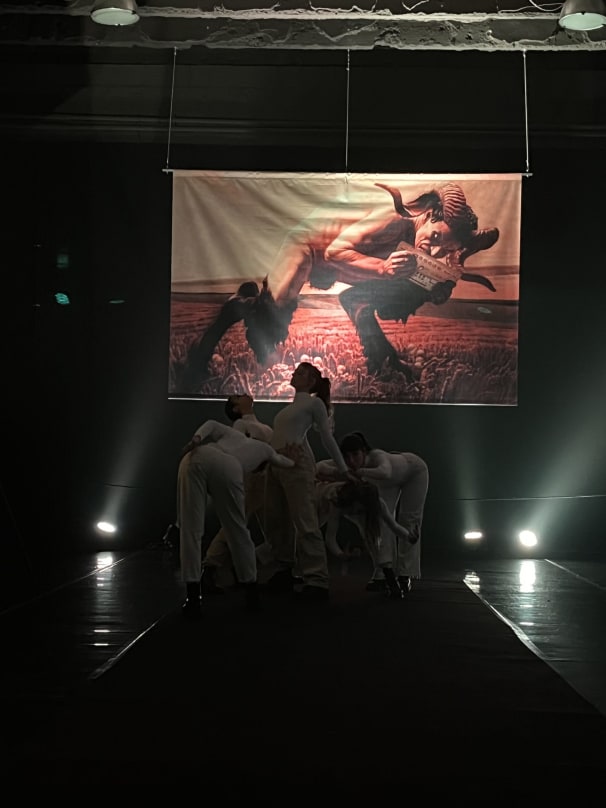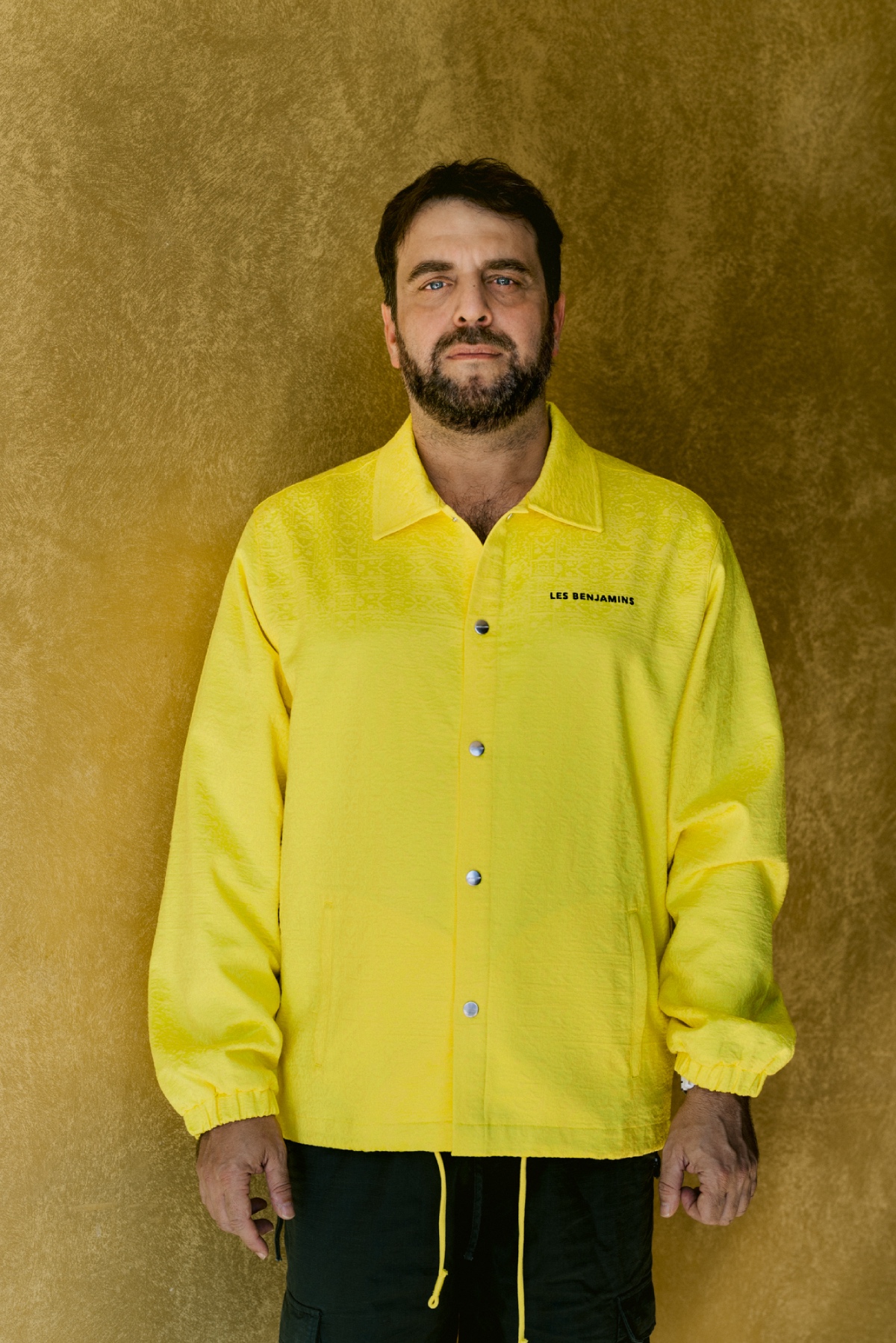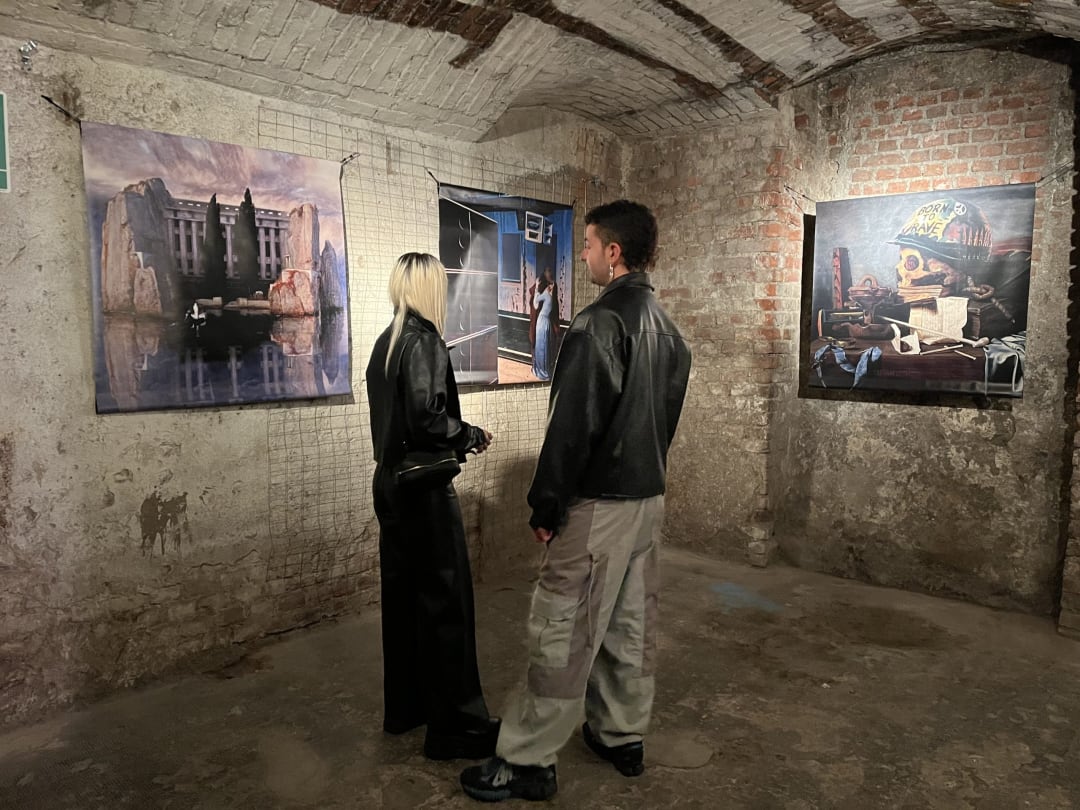
Bastion of hope – A techno temple for the lost future
The despise right-wing politicians have against raves is sadly not new, across Europe. Ravers have often been depicted by politicians as heavy drug users, trouble-makers, overlooking the fundamentally positive role of music in our lives.[...]

A veil lies over the city. Arriving at the BGY, you could already be overcome by a phenomenon induced by the disappointment of unfulfilled promises, for which they have found the name ‚Paris Syndrome’ in France. The trigger: the gaping difference between expectations and reality. Only it is not tourists, the guests of this city, who suffer most from the unfulfilled promises, but the Lombards themselves. But what remains for them is their rebellion. Welcome to Milan. Welcome to the Tempio del Futuro Perduto – the temple of the lost future.
‚La città della moda’ – the fashion capital of Italy – is unfortunately not only metaphorically shrouded in a veil. As a metaphor, it might even suit the fashion metropolis. The veil is a literal one. No region in Europe suffers from comparably poor air quality as northern Italy. If you ask Milanese people, different answers will be given as an explanation: too much traffic, too much industry, too little regulation. ‚Even to go one kilometre to the shops, many people take their cars,‘ Dario Buzzacchi grumbles. He is a journalist, politically active and has accompanied the Tempio del Futuro Perduto since the beginning. However, air pollution is the least of problems in regard of political conditions, Dario regrets.


Not far from the famous Cimitero Monumentale is the Tempio del Futuro Perduto. Important people rest there, in the cemetery. Only the shadow of their tomb monuments may come close to the greatness of their influence on (cultural) history: Personalities such as the pianist Vladimir Horowitz or the designer Achille Castiglioni linger on the monumental burial site, as does the controversial Futurist forefather Filippo Tommaso Marinetti. But they are not alone. They rest under the watchful gaze of Willy Monteiro Duarte, Giulio Regeni and Valeria Solesin. Three large-format murals have been immortalized here by Rosk&Loste and ‚Ratzo‘ with portraits of the three young deceased. They are all united by idealism, innocence and symbolism. They and the eternals of the Cimitero Monumentale meet as equals, even if they are not accorded the same, generally consensual honor.
[...]Growing up as a queer kid it was essential for me to have special safe spaces like raves and parties (sometimes illegal ones). [...]Pursuing for a community, longing to be part of it and feeling welcomed as you are literally saved my life.

Part of the crew, part of the mission
Matteo Bolognini is a DJ, producer, lecturer and part of the crew of the Tempio del Futuro Perduto. On first sight the ‚Tempio’ could seem like a club where electronic music is played, he admits. ‚But it is much more than that.‘ About five years ago, 60 young people from different backgrounds got together to create the Tempio del Futuro Perduto, a place that can be a cultural center and youth center as well as a club. A place you seek to receive donations of clothes. A place where the history of techno and the practice of DJing and producing is taught – visually, acoustically, universally. On the upper level of the former transport depot, the in-house ‚Scuolla della Techno‘ was founded. There is a timetable, daily and weekly seminars and workshops. Where does the equipment, instruments and various synthesizers (including Roland TR-909!) come from? ‚A lot of it comes from me, a lot of it is also provided by our artists,‘ Matteo remembers with all matter-of-factness, while we continue our tour to the in-house record shop with quite a few pressings that were born in the ‚Tempio‘. This is one of the many moments when you can feel that the ‚Tempio‘ team is not only united by a collective love of music, creativity and creation, but also by something at least as fulfilling and strengthening: the love of the collective. The love for their city and their neighborhood.


For certain club nights there were discounts in exchange for donations in kind, especially clothes, books, even mattresses can be found in abundance in the downstairs storage rooms. With the donated books, a library slowly developed; the donated clothes find new owners through the ‚Tempio‘. Markets are being organized on a regular basis, continuing a tradition of sustainable merchandise management. All in the spirit of respectful treatment – of things and goods, animals and plants, people and the whole planet. Through much effort and common goals, the veil over Milan is increasingly lifting.
There would be no more beautiful way to express the philosophy of the ‚Tempio’ than with the words of Tommaso Dapri, the founder of the Tempio del Futuro Perduto: ‚I wanted to be the guy you never met when you were younger.‘
The main problem is that Italy doesn’t see clubbing as part of the culture. [...]Without that blessing, nightlife workers will not be supported if there is another crisis like the pandemic.

The necessity of change
Historically, the Tempio del Futuro Perduto was born out of various needs:
The need for a techno club, because commercial motivations dominate the electronic music scene in Italy, according to Tommaso and Matteo. Nightlife is under the pressure and scrutiny of organized crime. Cultural-political interests lie with the Italian national sport, football. There is no perception let alone appreciation of nightlife culture on the part of politics. The clubs are in competition with each other, as is typical of regional feuds. Then there was the need for a cultural centre. A place for political statements, a place of art away from the gallery-dominated art market, a place for experimentation and creative self-exploration. A place to turn to in need and request. The need for a youth centre where you can meet the guy Tommaso never met. The need for a political statement.
Because politics is far from pulling the same strings as the young activists and creators of the ‚Tempio‘. Most recently, there was a success to celebrate, at least from the Tempio operators’ point of view: the decision of an almost five-year court case was in favor of the team, because officially the area around the former traffic site is considered occupied – a label that comes with a permanent threatening gesture. And so the euphoria over winning the case did not last long. Two days before the New Year’s Eve party at the Tempio del Futuro Perduto, a new section of the law (Article 5 of the ‚Decreto Rave‘) was passed in parliament that enables the government to prevent ‚illegal raves‘ with the threat of heavy fines and imprisonment. What exactly can be subsumed under ‚illegal raves‘ remains undefined. Tommaso Dapri fears for the existence of all club events at the ‚Tempio‘. And the whole Milanese music scene. Optimism is matched by cynicism when asked if there could be any upswing with the new government.

A safe space to be saved
Despite such activism the metaphorical veil over the city, over the region, over all of Italy is even thicker than the literal one. After Italy reached a historic low in voter turnout in the last parliamentary election, a right-wing coalition of ‚Lega‘, ‚Fratelli d’Italia’ and ‚Forza Italia‘ prevailed without ever having achieved an absolute majority. This was only possible due to a complex electoral system, a mixture of proportional and majority voting. Many people, especially young people, have no hope because of these circumstances and move abroad. Away from Italy. What suffers from the current coalition, I ask Tommaso: ‚Everything.’
Those who don’t move away have few options not to lose themselves in resignation. Those who stay have few places to prevent themselves from resignation. This makes not only protection but also support, international visibility and regional networking all the more important. Traditions of electronic music culture and community work are what make the Tempio del Futuro Perduto a unique and necessary focal point for Milan. A place to be preserved no less than the Cimitero Monumentale across the street. A place for everyone.
